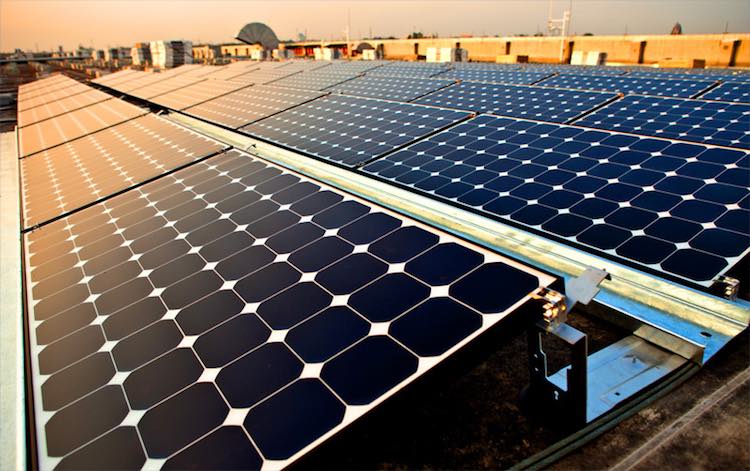What is the Green Deal Investment Plan?

The EU’s Green Deal is aimed at making Europe the world’s first carbon-neutral continent by 2050.
The European Green Deal Investment Plan (EGDIP), also referred to as Sustainable Europe Investment Plan (SEIP), is the investment pillar of the Green Deal. To achieve the goals set by the European Green Deal, the Plan will mobilise at least €1 trillion in sustainable investments over the next decade. Part of the plan, the Just Transition Mechanism, will be targeted to a fair and just green transition. It will mobilise at least €100 billion in investments over the period 2021-2027 to support workers and citizens of the regions most impacted by the transition.
The European Green Deal Investment Plan has three main objectives:
- First, it will increase funding for the transition, and mobilise at least €1 trillion to support sustainable investments over the next decade through the EU budget and associated instruments, in particular InvestEU;
- Second, it will create an enabling framework for private investors and the public sector to facilitate sustainable investments;
- Third, it will provide support to public administrations and project promoters in identifying, structuring and executing sustainable projects.
How will the European Green Deal Investment Plan be financed? How will the €1 trillion be mobilised?

Becoming the world’s first climate-neutral bloc by 2050 is a great challenge but also a great opportunity. The EU budget, Member States and private actors will all play an important role in financing the European Green Deal. The EU budget alone cannot be enough to tackle climate change or to meet the massive global investment needs. Member States and private actors will need to provide the scale.
The next long-term EU budget will run for seven years from 2021 to 2027 and will invest substantially in climate- and environment-related objectives. The Commission proposed 25% of its total to contribute to climate action and spending on the environment across multiple programmes (e.g. European Agricultural Fund for Rural Development, European Agricultural Guarantee Fund, European Regional Development Fund, Cohesion Fund, Horizon Europe and Life funds). Taken together and extrapolated from 7 to 10 years, as well as assuming that the climate target post-2027 will be at least maintained, the EU budget will provide €503 billion to the European Green Deal Investment Plan. This will trigger additional national co-financing of around €114 billion over this timeframe on climate and environment projects.
InvestEU will leverage around €279 billion of private and public climate and environment related investments over the period 2021-2030. It will provide an EU budget guarantee to allow the EIB Group and other implementing partners to invest in more and higher-risk projects, crowding in private investors.
To ensure no one is left behind, the Just Transition Mechanism will mobilise at least €100 billion of investments over 2021-2027 with financing coming from the EU budget, co-financing from Member States as well as contributions from InvestEU and the European Investment Bank (EIB). Extrapolated over ten years, the Just Transition Mechanism will mobilise around €143 billion.
Lastly, the Innovation and Modernisation funds, which are not part of the EU budget, but are financed by a part of the revenues from a key policy tool – the auctioning of carbon allowances under the EU Emissions Trading System, will provide some €25 billion for the EU transition to climate neutrality, with a special focus on lower-income Member States in the case of the Modernisation Fund.
How much of this is new money?
The European Green Deal Investment Plan builds on the Commission’s proposal for the future long-term budget 2021-2027. Running for 7 years, it will mobilise 25% of the EU budget for climate financing and invest in environmental objectives through several EU programmes. Extrapolated to 10 years, assuming the climate target will be at least maintained post -2027, the long-term budget is expected to deliver €503 billion. The next long-term budget 2021-2027 is currently under negotiation. The numbers are extrapolated to ten years, without prejudice to the final agreement on the next long-term budget and the one after 2027.
The Plan also builds on the contributions from national budgets to EU projects, on public and private investments mobilised by InvestEU and the ETS funds (Modernisation and Innovation Funds).
As part of the European Green Deal Investment Plan, the Commission has proposed the establishment of a Just Transition Mechanism including a new Just Transition Fund. The Just Transition Fund will be equipped with fresh funds of €7.5 billion from the EU budget which will come on top of the Commission 2018 proposal for the long-term budget.
Will you need to make changes to the current next long-term budget (2021-2027) proposals to make available these EU funds?
On 2 May 2018, the Commission put forward a proposal for a modern, balanced and fair budget to deliver on Europe’s priorities as set out by EU Leaders in Bratislava in 2016 and in Rome in 2017. The 37 sector-specific proposals followed immediately afterwards. Since then, the Commission has worked hand-in-hand with the Rotating Presidencies of the Council, and with the European Parliament, to take the negotiations forward. A lot of progress has been made on the overall framework and on many of the sectoral proposals.
The Commission seeks to pursue its priorities as set out in the political guidelines as part of the broader ambition for the EU budget. An ambitious Just Transition Mechanism is a priority in that context. This is the reason why the Commission has tabled this proposal very early in its mandate.
Today’s proposals on the Just Transition Mechanism and the Just Transition Fund Regulation are being put forward at a time when the negotiations on the long-term EU budget are quite advanced. They will therefore feed into the overall negotiations process. The focus is on securing an outcome that meets our objectives, taking account of the broader constraints. The long-term budget proposal will therefore not be reopened, and the Commission expects that today’s proposals will be accommodated in the framework of the final agreement on the 2021-2027 long-term budget. The negotiating box published by the Finnish Presidency contains a pour memoire point for the Just Transition Mechanism, recognising that this new instrument warrants an additional allocation.
Does the €1 trillion under the European Green Deal Investment Plan overlap with the €1 trillion target announced by the European Investment Bank for climate projects?
The Commission has committed to mobilise at least €1 trillion of investments over the next decade to support a just and green transition. InvestEU will be key in this respect. The EIB will also contribute to this target under InvestEU, including the dedicated just transition scheme which is pillar 2 of the Just Transition Mechanism, as well as pillar 3 of the Mechanism in the form of a public sector loan facility. The EIB’s contribution to the European Green Deal Investment Plan is expected to amount to around to €250 billion in terms of mobilised investments under EU mandates (i.e. under EU instruments and through the EU budget).
In addition, the EIB has announced the doubling of its climate target from currently 25 to 50% by 2025. Over the next decade, this means a total of €1 trillion in investments, which includes the EIB’s own financing operations as well as those under EU mandates.
What is the relation between the European Green Deal Investment Plan and InvestEU?
The InvestEU Programme was proposed in June 2018 as part of the future long-term EU budget. It is part of and complementary to the European Green Deal Investment Plan.
InvestEU will dedicate at least 30% of mobilised investments to climate- and environment-related projects. It also contributes to the Just Transition Mechanism with a new dedicated InvestEU scheme to mobilise €45 billion of sustainable investments in the regions most affected by the transition challenges.
InvestEU will also play an important role in promoting sustainability practices among public and private financiers and project promoters, by setting standards for tracking climate-related investments and assessing the environmental and social impact of projects.
Finally, the InvestEU programme will provide technical assistance and advisory support through the InvestEU Advisory Hub. It will help public and private project promoters identify, develop and implement green investment projects. At the same time, the InvestEU Portal will continue to offer a free, online, user-friendly tool, providing EU businesses and project promoters in search of financing with the visibility and networking with investors worldwide.
What kind of projects will be financed under the European Green Deal Investment Plan? Who can benefit?
The projects financed under the European Green Deal Investment Plan will contribute to reaching the goals of the European Green Deal, to the emergence of new, clean energy and circular economy industries and they will create high quality jobs for a competitive European economy fit for the 21th century.
The funds and programmes contributing to the European Green Deal Investment Plan (such as InvestEU or the Just Transition Fund) will provide tailored financing to a wide range of projects. Both small projects (e.g. individual household energy renovation) and larger ones (e.g. installation of a network of electric vehicle charging stations) will be able to benefit through dedicated programmes and products. The investment support will be adjusted to the level of risk that specific projects carry.
Looking at examples of sustainable investment projects backed by the Investment Plan for Europe offers insight into the kind of projects that could be financed under InvestEU as part of the European Green Deal Investment Plan. Such projects include modernising district heating services in Budapest, supporting the installation of solar panels on private homes and making industrial companies more energy efficient in Lithuania, or modernising the electricity and heat supply in Zagreb.
The Just Transition Mechanism will focus on the social and economic costs of the transition in the most impacted regions and finance projects ranging from creation of new workplaces through support to companies, job search and re-skilling assistance for jobseekers who lost employment due to the transition, but also renovation of buildings and investments in renewable energy, district heating networks and sustainable transport. MORE
RELATED:



 Streetfilms/Screen capture
Streetfilms/Screen capture Streetfilms/Screen capture
Streetfilms/Screen capture






